The 12 Types of Coat
Everybody knows that dogs come in all kinds of shapes, sizes and colour patterns. Most of you may know the difference between a longhaired breed and a shorthaired breed (never mind that both of those types can actually occur in the same breed), and that some coat types may even overlap, but did you also know that there are at least 12 different coat types?
Let’s have a look, shall we?
The Shorthaired Coat
It probably goes without saying that dogs with a shorthaired coat have fur that is typically less than an inch long. It’s important to note, here, that shorthaired breeds are distinct from Single Coat breeds, even though both types can (but don’t necessarily) appear the same at first glance. To groom a dog with this kind of coat, all you really need is a decent slicker brush or comb. If your shorthaired buddy is a heavy shedder, you may want to run through their coat with the brush or comb a couple of times a week and bathe them when they get messy.
Some examples of breeds with a shorthaired coat are the Greyhound and the Boxer.
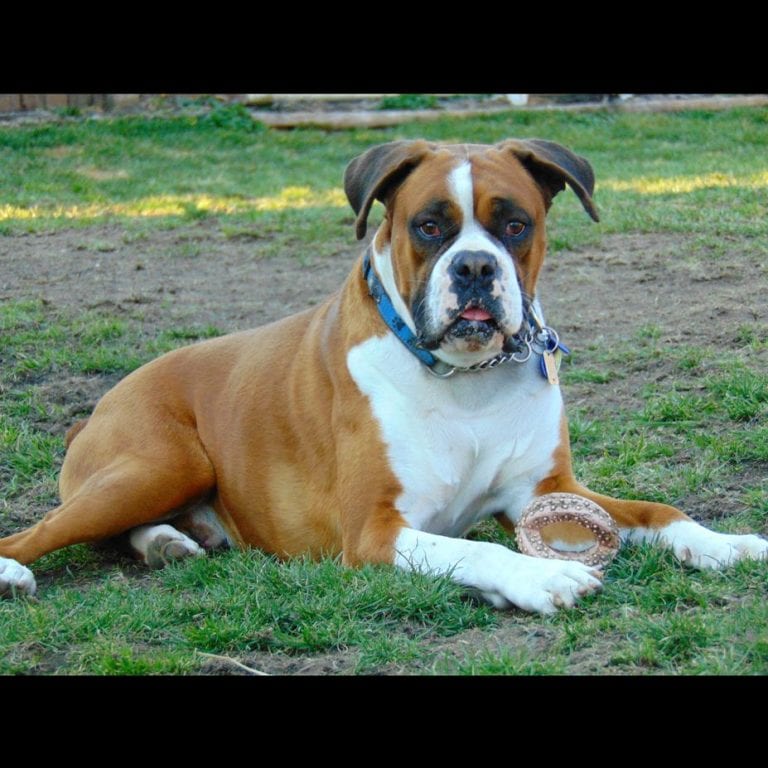
The Single Coat
Some breeds with a single coat can look like a shorthaired breed at first glance, but there are some breeds with longer coats that are also single coated. The main difference is that, unlike the shorthaired (or other) breeds, single-coated pups have only one layer to their coat—most breeds have a topcoat and an undercoat.
Dogs with a shorter single coat can be groomed in basically the same way as a shorthaired breed, but those with longer coats will require tools that are designed to handle the extra work of detangling it. For those breeds, a weekly treatment with a sturdy pin brush or wide-toothed comb will help keep their coat in good order.
An example of a short single-coated breed is the Doberman Pinscher, while an example of the longer single-coated breed is the Poodle.
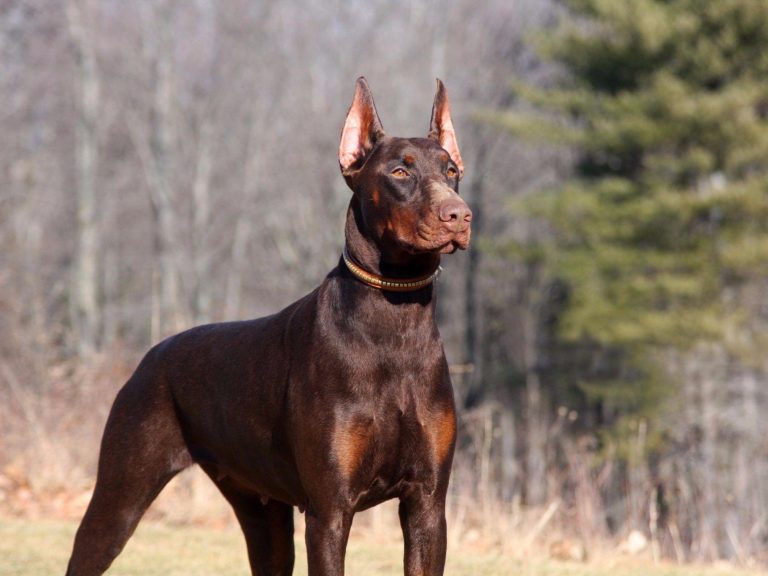
The Smooth/Jacket Coat
Breeds with a smooth or jacket coat sport fur that is tight to the body and typically less than an inch long. Grooming a dog with this kind of coat is probably the easiest task you’ll ever do as a dog owner. All it requires is a weekly treatment with a slicker brush, or even one of those nylon brushes that slip over your hand. An occasional bath is also good for keeping dander under control, as with any breed.
Some examples of breeds with a smooth or jacket coat include the Bull Terrier and the Dachshund, although the Dachshund also has a feathered variety.
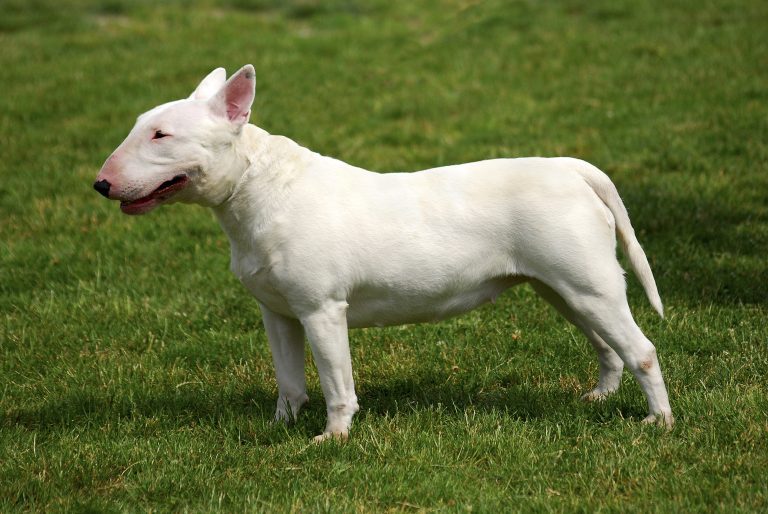
The Double Coat
It’s noteworthy to include that most coat types have two layers, with the exception of the single-coat types. In the case of the double-coated breeds, we are speaking of breeds with thick, dense fur that functions as insulation and weatherproofing. This variety of coat is typically found on mountain and northern dogs—dogs that are bred to endure colder temperatures. While double-coated dogs will shed normally, they will often “blow their coat” twice a year; that is, they shed their entire undercoat, which will then grow in thicker or thinner depending on the time of year.
Grooming dogs with this type of coat will vary a bit, depending on whether they are blowing out their coat. Brushing their coats two or three times a week will do, but when they are blowing out they will require daily brushing. In this case, a Furminator (or something like it) will work wonders in gathering up the loose hair. It is never a good idea to shave or otherwise cut their coat, as this can cause irreparable damage.
Some examples of breeds with double coats include Huskies and Belgian Tervuren Shepherds.
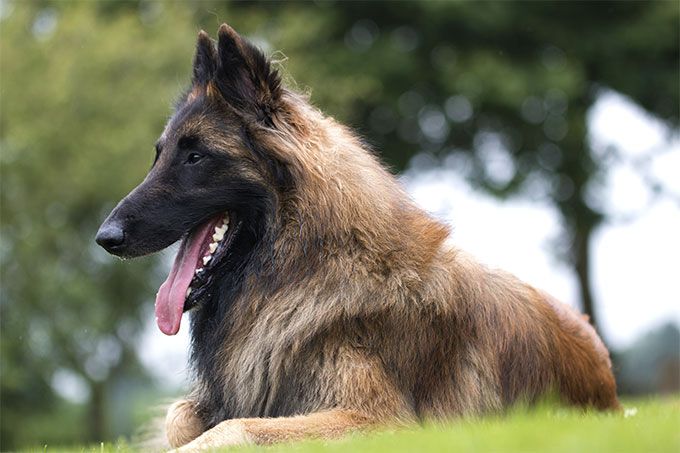
The Medium or Longhaired Coat
Although the definition is somewhat vague, and can cover almost any length of fur, typically dogs with a longhaired coat have fur or hair that is longer than an inch. For that reason, I’ve included the medium coat in this category. Longhaired breeds are prone to matting when their coat is not taken care of properly, so regular brushing with a good bristle brush or pin brush (with the latter being better for more delicate coats) is a must. Occasional clipping may be necessary to keep the coat in good order.
Some examples of breeds with a longhaired coat include American Cocker Spaniels and Longhaired Dachshunds.
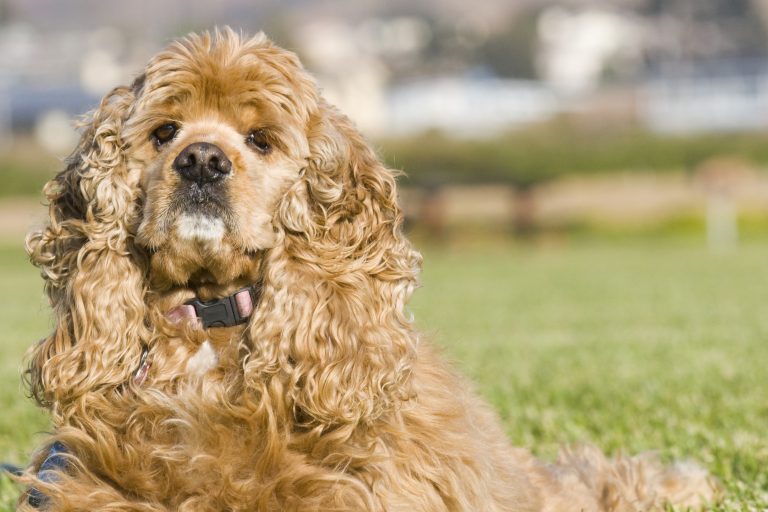
The Feathered Coat
This variety of coat is essentially like a longhaired coat, except that it tends to be finer overall and feathered around the ears, the back of the legs and the underside of the tail. Grooming this kind of coat requires treatment with a pin brush or wide-toothed comb once or twice a week to keep it in good health. Since breeds with a feathered coat tend to pick up debris, some “as-needed” attention will be required to get the bits and pieces out.
Some examples of breeds with a feathered coat include the Gordon Setter and the Irish Red Setter.
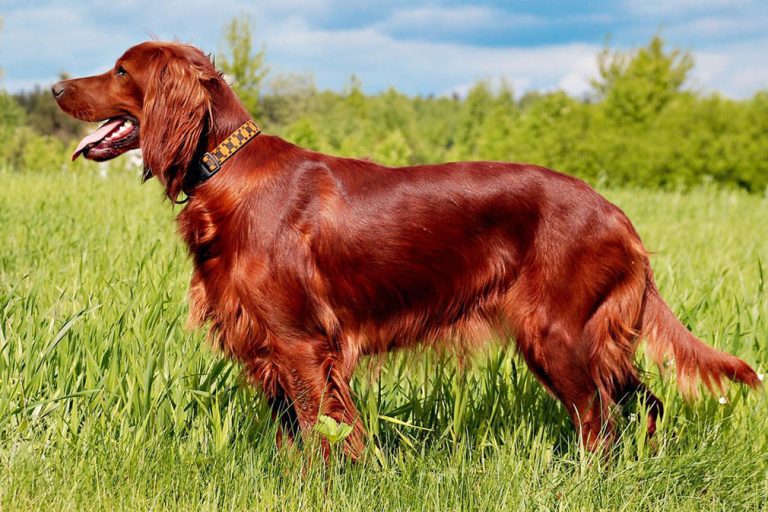
The Wire or Broken Coat
Wire or Broken Coats tend to be found in breeds that are bred to handle chillier weather, since it has a coarse outer layer that is naturally designed to protect your four-legged buddy from the elements. Since this type of coat is stiff, it tends to stand away from the body, not necessarily all going in one direction (hence, “broken”). Grooming dogs with wire coats is quite a bit different than most other breeds. Some breeds, such as Schnauzers, typically sport coats that are close cut…but it’s important to note that clipping a wire coat can soften the texture of the fur over time, as well as lighten the colour. If you have a working dog, this may not be the better option. Hand-stripping is the best way to go, in order to keep your buddy’s coat the way it is supposed to be. Hand-stripping involves pulling out dead fur by hand. This doesn’t hurt the dog, as the fur is already dead. Tweezers may help you here.
Some examples of breeds with a wire coat include Schnauzers (Giant and Standard), Otterhounds, Affenpinscher and Brussels Griffon.
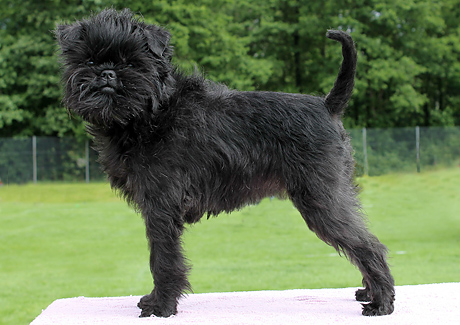
Corded Coat
Corded coats are a rare variety, appearing in only a small handful of breeds across the world. On the surface, corded coats look the way dreadlocks do on humans: long cords that form by crossing the hairs together. In humans, this is done on purpose. In dogs with corded coats, the process occurs naturally, with the fur growing crosswise and the undercoat and topcoat becoming entwined. Breeds with corded coats don’t typically begin developing cords until they are adult, and the cords take awhile to form fully.
Grooming breeds with corded coats is fairly easy but time-consuming. While you can brush your younger buddy, brushing is right out of the question once the cords start forming. Regular bathing is necessary to keep the coat clean, but you can’t leave the cords to dry on their own as it can take over 48 hours to dry completely and the moisture can foster the growth of bacteria. So, in order to prevent the growth of bacteria, a complete blow-drying is necessary.
Some examples of breeds with corded coats include the Puli, the Komondor and the Bergamasco.
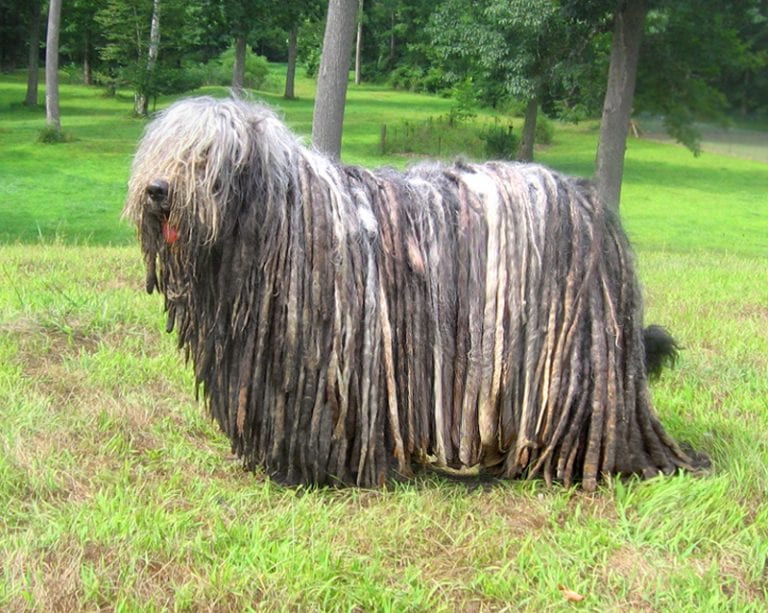
Standoff Coat
Found on cold climate breeds, this type of coat doesn’t lay flat but rather stands out from the body. It has a thick undercoat that helps provide insulation against the elements, while providing support for the longer and much stiffer topcoat.
Contrary to what you might think, grooming dogs with standoff coats is actually very easy. All they need is a regular brushing, to make sure that the dead fur gets removed so that it doesn’t end up all over your home. Be sure not to clip or shave their coat in any way, since doing so can damage their coat in the long term.
Some examples of breeds with standoff coats include the Norwegian Elkhound, the American Eskimo Dog and the Samoyed.
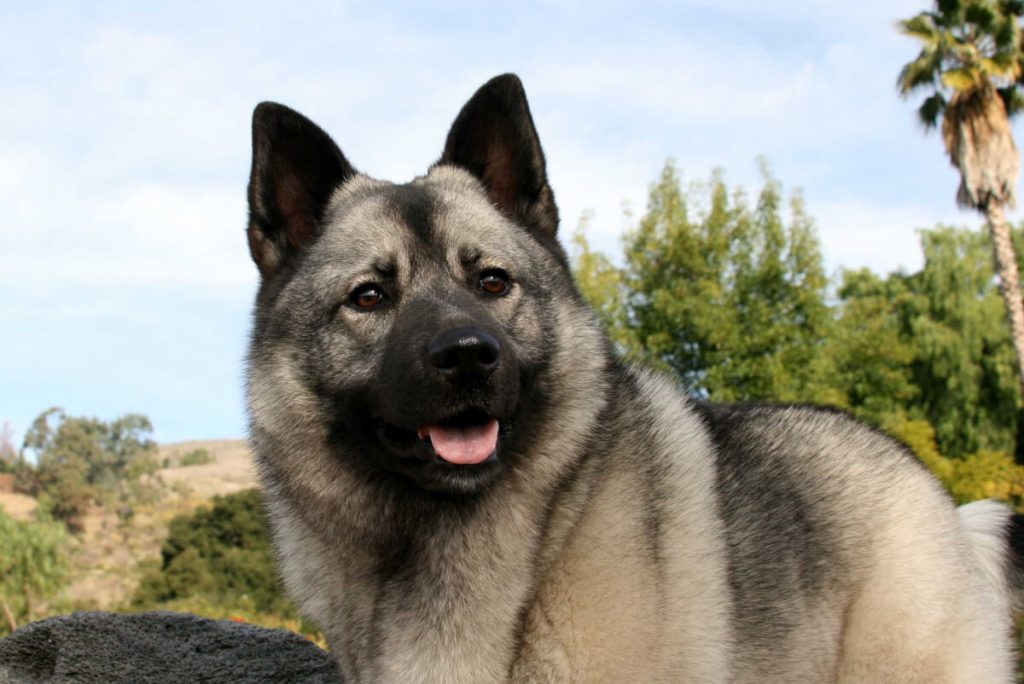
Curly Coated Dogs
As the name suggests, dogs with this type of coat sport curls that range from ringlets to tight curls and from short to long in length. The texture to the actual hair tends to be fine, but the curls will give it a much fuller appearance. To groom this type of coat properly, a sturdy pin brush is often enough, but a grooming rake with metal tines works well for removing tangles. A grooming rake is essentially a comb, but the tines are arranged in a shape that resembles a grass rake, giving you better leverage for removing trickier tangles.
Some examples of breeds with curly coats include Portuguese Water Dogs, Airedale Terriers and Poodles.

Silky Coated Dogs
Dogs with silky coats tend to stand out in a crowd, due to the glossy sheen of their long fur. If it’s well taken care of and left to grow out, silky coats can make the dog look like they are draped in satin. Breeds with this kind of coat require frequent brushing to keep their fur shiny and knot-free. You won’t need to bathe your silky coated dog any more than any other breed, however, unless they have a penchant for rolling around in the mud.
Some examples of breeds with silky coats include the Silky Terrier, the Yorkshire Terrier and the Afghan Hound.
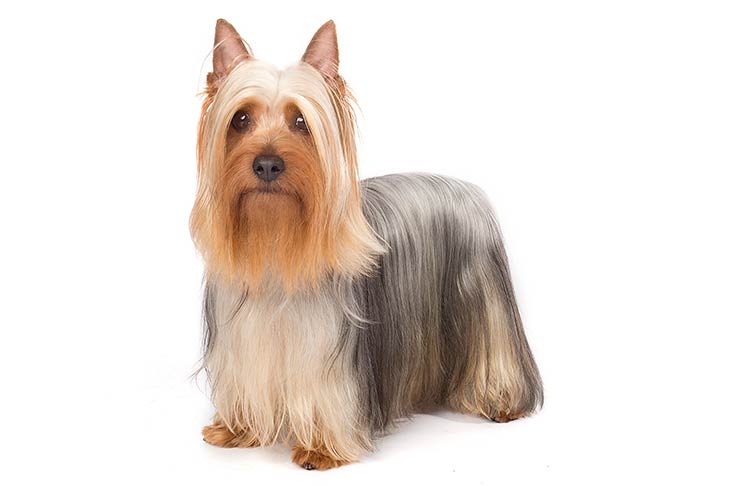
Hairless
While a hairless dog doesn’t generally have much fur to speak of (only a few such breeds are actually completely bald), this does still warrant consideration as a coat type. Some hairless breeds will be completely lacking in anything more than a fine peach fuzz, while others (such as the Chinese Crested Dog) will have patches of fur in some places. They may not require brushing, unless they have some fur-covered areas, but they do require skin care. Being functionally bald, in this case, means their skin will need to be protected from the elements to avoid burning or frost bite.
Some examples of hairless breeds include the Xoloitzcuintli and the American Hairless Terrier.
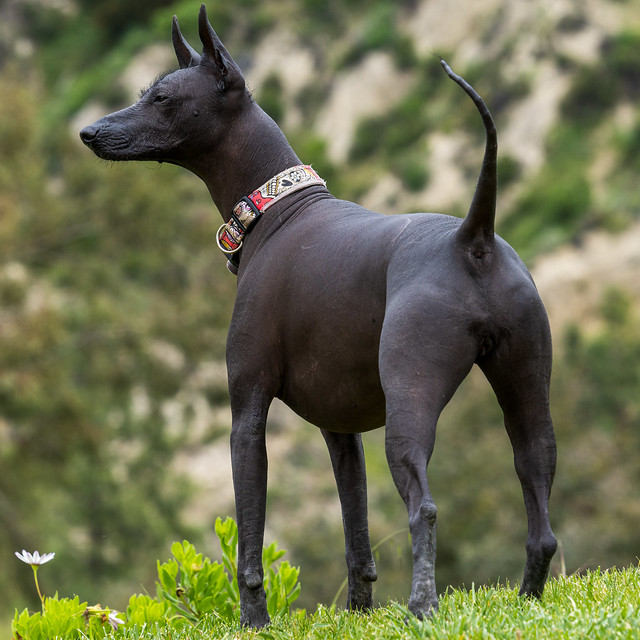
Hair vs. Fur
Many people will say that some dogs (which are usually considered to be “hypoallergenic”) have hair while others have fur. This concept is a bit misleading since, technically, hair and fur are the same thing.
If you looked at a sample of each under a microscope, you would find no difference between them. When people say “hair”, they are usually referring to dogs with a single coat. It may stay short or grow long, it may form curls or be wavy. The outward appearance may differ, but the overall texture will be basically the same.
What is regarded as “fur” belongs to those dog breeds bearing a double coat. Since the overall texture of the double coat is similar to that of, say, wolves, coyotes or any other kind of canid, it tends to be thought of as different from “hair.”
It’s important to note, here, that the fur or hair itself is not what produces an allergic reaction in people, and, in fact, there are no breeds that are 100% allergen-free.
The two big allergens belonging to dogs are their dander and their saliva, and people with dog-related allergies may or may not be allergic to both. Since dogs who shed tend to produce more dander, and dogs who don’t shed don’t produce quite as much, the logical assumption is that single-coated dogs are more hypoallergenic.
Love in Different Packaging
Sure, a dog’s outward look relies heavily on not only the state of their coat but also the style of it.
Humans may be attracted to certain breeds, certain coat types, certain sizes and what have you, but remember this: the two most important aspects of a dog are the size of their heart and the strength of their spirit.